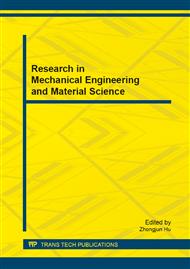p.207
p.211
p.216
p.220
p.225
p.230
p.234
p.240
p.244
Calculation and Analysis of Submersible Well Pump Clearance Leakage Loss
Abstract:
The 200QJ80-22 submersible well pump was investigated to predict the effects of leakage change of the submersible well pump on external characteristics. The integral model of impeller, guide vane and wear-ring was established and the numerical simulation for three-dimensional whole flow field was carried out. The results show that the predicted results have a good agreement with the experimental data. The result of the numerical simulation shows that the head and efficiency of pump decrease with the size of clearance increasing. Especially when the size of clearance is larger than 0.7 mm, the decreasing becomes more obvious. The leakage calculated through numerical simulation were compared with the values obtained according to empirical formula and the results indicates internal clearance leakage at design point is close to the value calculated through empirical formula in smaller wear-ring clearance, but the simulated values of leakage have a small gap with calculated value obtained from empirical formula. Simultaneously, the Second stage leakage decrease significantly compared to the first stage leakage with the flow rate increasing, while the values got by the empirical formula have a small gap with simulated values obtained.
Info:
Periodical:
Pages:
225-229
Citation:
Online since:
October 2013
Authors:
Price:
Сopyright:
© 2014 Trans Tech Publications Ltd. All Rights Reserved
Share:
Citation:


